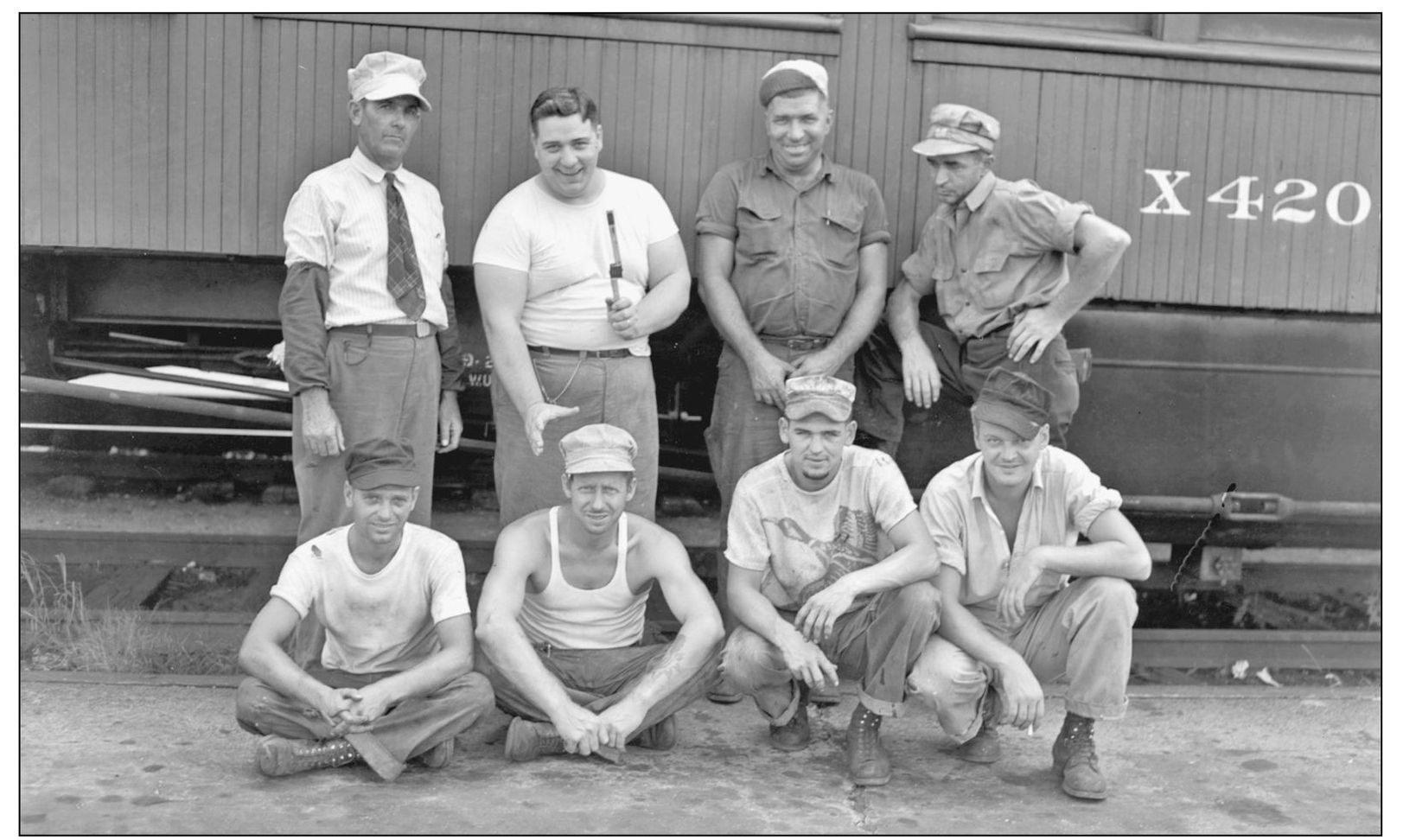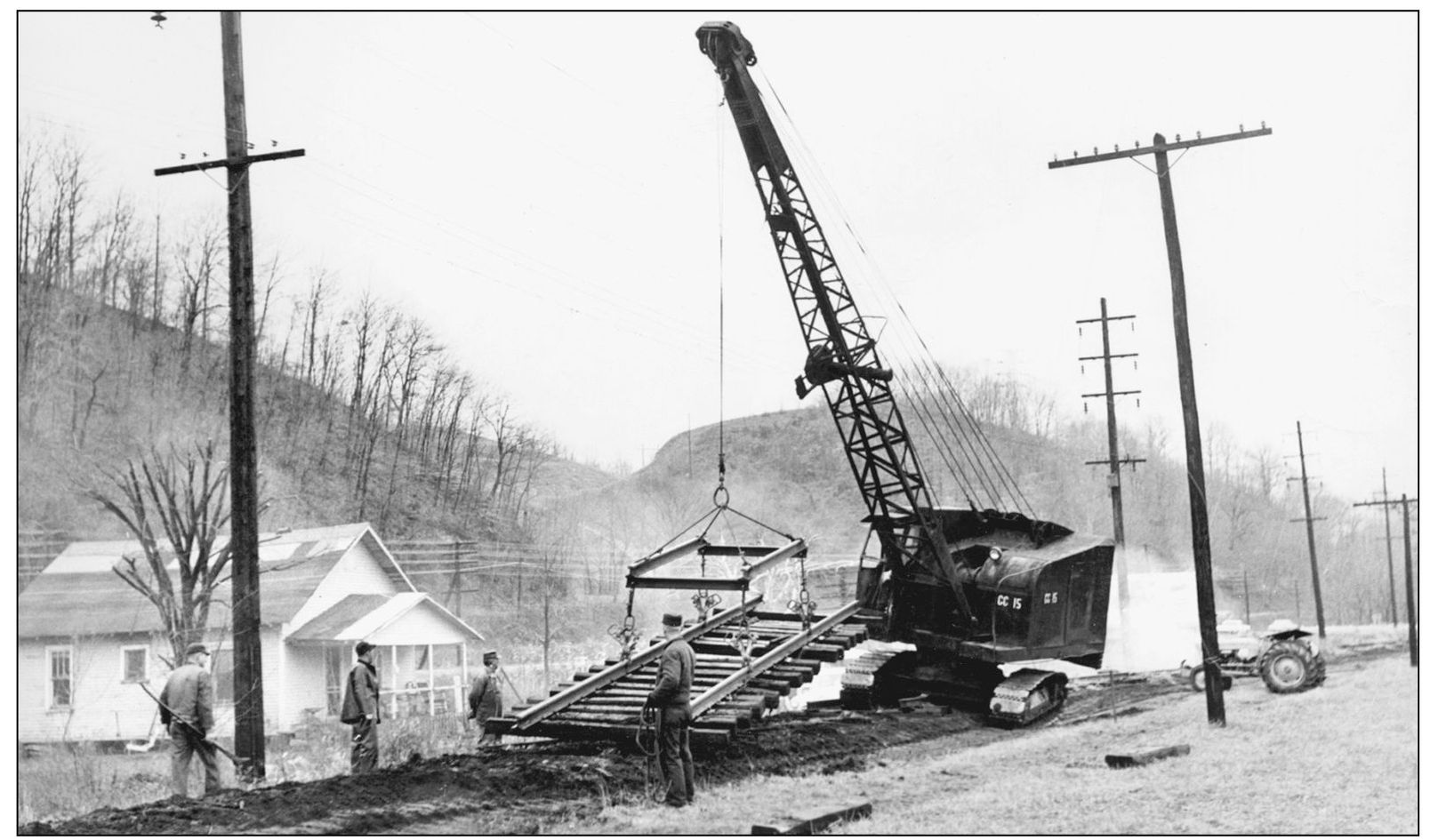Eight
TRACKVUORK

Spotted near the B&O station in Huntington, two ancient passenger coaches that have been relegated to camp-car status provide housing for an extra signal force in the summer of 1952. The first car is a diner, the second a sleeper. Notice the buses—Greyhound also used the B&O station from December 1945 to December 1952. (Charles Lemley/Bob Withers collection.)

In the kitchen of Camp Car X4205, the chef prepares breakfast for the hardy crew that will install flashing-light signals at road crossings in the vicinity of Huntington in the summer of 1952. There is a place for everything and everything is in its place: that’s a railroad signal gang’s kitchen. (Charles Lemley/Bob Withers collection.)

“Come, for all things are now ready.” It is doubtful that the camp-car cook’s mind was on Luke 14:17, but he obviously is proud of the tables he has set for the signal gang preparing to walk over from the sleeper for breakfast. (Charles Lemley/Bob Withers collection.)

The fellow standing next to the man who appears to be the signal force foreman seems to be engaged in a little horseplay as the photographer gathers the crew for a picture. Likely it is one of the last times the guys down in front will be able to sit down, at least until lunch. (Charles Lemley/Bob Withers collection.)

Breakfast and the photograph session—well, most of it—is over now, and the crew prepares to head out for a day of hard work on their tiny motorcar and trailer. Notice the sleeper in the left background—it is assigned to the Pittsburgh-Huntington line; having arrived that morning on Train 77, it will return north that night on Train 78. (Charles Lemley/Bob Withers collection.)

One of the first moves toward more economical operations when the Chesapeake and Ohio Railway took control of B&O in 1963 was a plan to consolidate the B&O and C&O yards in the Huntington area. The unification rendered B&O’s eight miles between Huntington and Kenova superfluous, so here, on Thursday, January 6, 1966, track gangs are ripping up panels of track and placing them in gondola cars for use elsewhere. Some B&O yard tracks will survive in order to maintain access to industries not served by the original C&O. The B&O passenger and freight stations will be preserved and become part of a retail development called Heritage Village. (Both photographs Bob Withers.)
